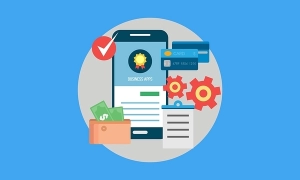
At the start of almost any project, one question arises: which software development model is the most suitable for successful implementation? There are many debates about the advantages and disadvantages of different models. Followers of different methodologies insist that their solution is the most useful. For you to make a decision, let's consider the most popular of them: Waterfall, Kanban, Scrum, Lean, and DevOps.
What is Development Methodology?
The software development methodology is a set of rules to define the order of tasks, management and control of execution, interaction with the customer, methods of quality assessment, and interaction between project participants.
Usually, the development model is chosen based on the type of the project, its characteristics, number of participants, budget, and other features. Furthermore, the team's characteristics, the project manager's character, and his/her views on the workflow organization can influence the decision as well.
Leading development teams can think flexibly and choose the best software development model for each project individually, taking into account all its peculiarities.
Waterfall: A Step-by-step Methodology
The waterfall development model is a sequential step-by-step execution of the assigned tasks. This approach is considered one of the oldest, as it belongs to the traditional methods of software development. Due to its simplicity and clear planning, developers and customers all over the world prefer this model.
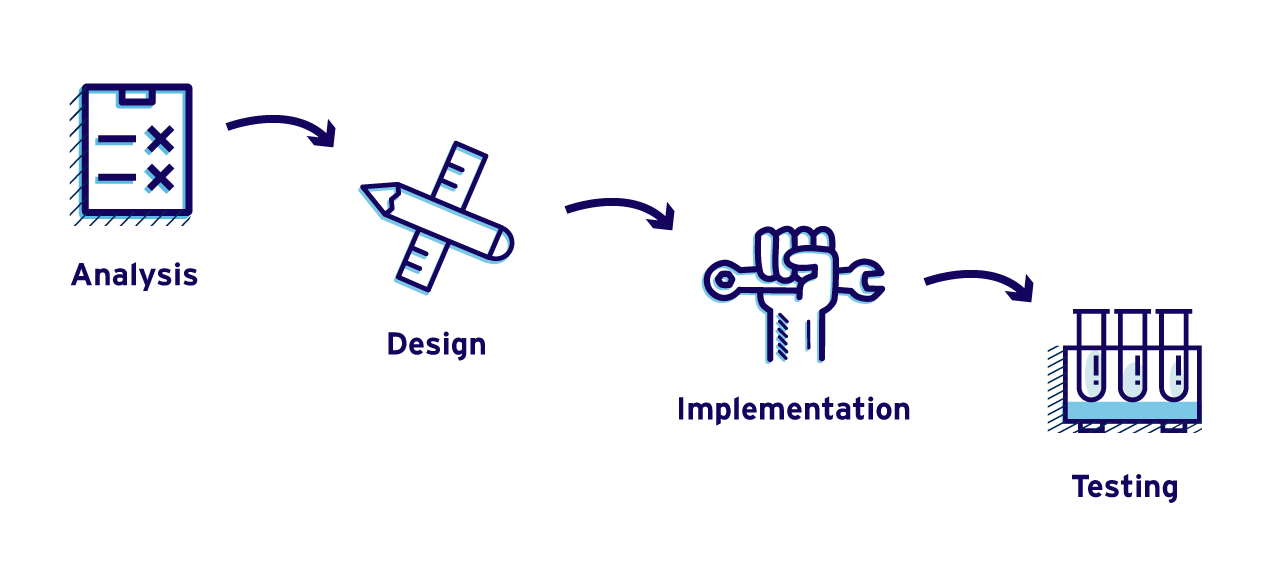
The Essence of The Waterfall Methodology
The development consists of a sequence of steps:
- Collecting and defining requirements. The result is a document that lists all the requirements for the product;
- Design. Development of the architecture and appearance of the user interfaces;
- Implementation. The actual writing of the program code;
- Testing. Quality control and necessary corrections;
- Maintenance. In the final step in software development, the product is available to users and goes to technical support.
Each of the steps begins only when the previous one is done.
When is Waterfall Suitable?
This methodology is successfully used in small projects with a minimum number of participants. The step-by-step sequence allows you to avoid confusion and clearly understand the stage of development.
The Waterfall is also used in large projects designed for long-term development. Here, the step-by-step methodology is needed during the strategic planning level.
Another important advantage of Waterfall is maintaining the utmost confidentiality for projects where data breaches due to human error can be the highest. At each stage, several executors are involved in the project, and the rest have no information about the process beyond their own competence.
Kanban: Easy Interaction
Nowadays, Kanban boards are used in many industries and are becoming more and more popular. Kanban was born in Japan as a way to improve cooperation between departments in the automotive industry. Kanban is now used in any project where people need flexibility and communication between different participants. These advantages have made the Kanban software development model very popular.
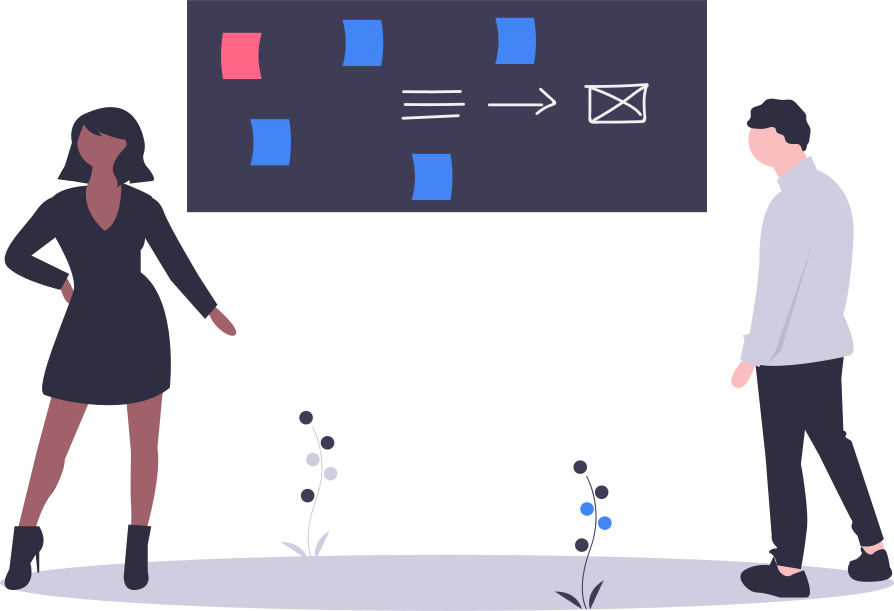
The Essence of Kanban Methodology
The contractors see their own tasks and the ones from other people as stickers on the Kanban board. The project manager sets priorities and deadlines that can be flexibly changed. Moreover, each project participant can choose the tasks to perform in a certain period of time.
The methodology is very flexible and allows you to significantly speed up the process of project execution. Developers don't need additional training to use it. and, unlike step-by-step methodology, they can choose their tasks.
For example, if there are problems with hosting, a developer can postpone the work on the current task and switch to another one. They can also perform several tasks at once.
When is Kanban Suitable?
This development model is good for short-term projects with a small number of people involved. In this case, you get the necessary flexibility and understanding of priorities.
If you're involved in a long development process, Kanban won't be so good for you because the sticker system doesn't allow you to predict timelines. Also, this approach is not very good for project planning.
On the other hand, while working with regular updates, Kanban helps achieve the necessary level of flexibility.
Scrum: Flexibility and Client Engagement
Scrum methodology was essentially one of the options of the Agile manifesto, which provides maximum flexibility in development and client orientation. In this case, you can quickly adjust the development process if necessary, and expect full functionality of the product throughout all stages of development.
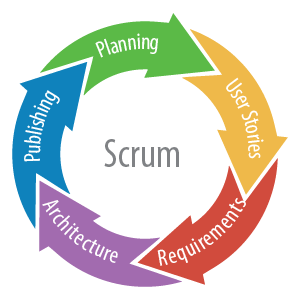
The Essence of Scrum Methodology
This software development model implies constant interaction between developers and project managers. It includes overall planning and the involvement of professionals with clearly defined tasks and deadlines. Moreover, the manager interacts simultaneously with the developers and the customer. If necessary, according to the Agile manifesto, working by this methodology provides changes directly in the process of work.
When is Scrum Suitable?
This methodology is the best software development model for projects requiring interaction between small working groups. It's great for projects in terms of MVP, which means getting the minimum viable product with further improvements. Functionality testing in this model is thorough, and adjustments are made in a short period of time.
But to use Scrum, you will need clear advance planning and high-quality management. The lead developers here also serve as managers, as they monitor the process and make needed adjustments.
You should also pay special attention to documentation, because when working in Scrum, developers make adjustments quickly, and they're not always properly documented.
Lean: Careful Updating Of Existing Projects
If you already have a working project that needs major upgrades, and you don't want to lose quality and user loyalty, Lean is the best model for your product. The methodology was created in the middle of the 20th century in Japan and was used by Toyota employees.
The purpose of Lean methodology is to improve the project and to bring it to modern standards 3 times faster than with other methods. You can achieve this by competent interaction and focusing on the functions which will bring the greatest benefit.
The Essence of Lean Methodology
To effectively work by the Lean method, you will need to have qualitative technical documentation. At planning, you should identify key functions and define priorities. With step-by-step upgrades, you can realize necessary improvements in a short period of time.
When is Lean Suitable?
We have already discussed when you might need software development by this methodology. Here is an example for better understanding: the Dropbox service.
The company started its business in 2007 having the minimum functionality. You can find this information in a 3-minute video on YouTube if you wish. Using Lean development, within a few years, the service evolved from a hardly viable product to one of the leading cloud storage services with over 500 million loyal users.
Gradually, new features were added, integration with Microsoft Office appeared, and the Dropbox for Business service was developed.
To use this approach effectively, you will need high-end programmers. Such work requires the utmost precision and a deep understanding of the product under development.
DevOps: Rapid Implementation of Projects of Any Complexity
DevOps methodology will be the best solution for product development if the team is ready for interaction. This development model helps programmers clearly understand what stage designers are at, what the testers are doing, and vice versa. Profound interaction helps developers work efficiently. As a result, the speed of implementation and quality of the project become higher.
The Essence of DevOps Methodology
The collaborative work of different departments and specialists that can directly exchange information increases efficiency. However, in this case, you will need a high corporate culture and focus on results.
That is why when using DevOps, motivating your staff is as important as planning and competent task setting.
The methodology combines a strategic plan with great flexibility typical for Agile models.
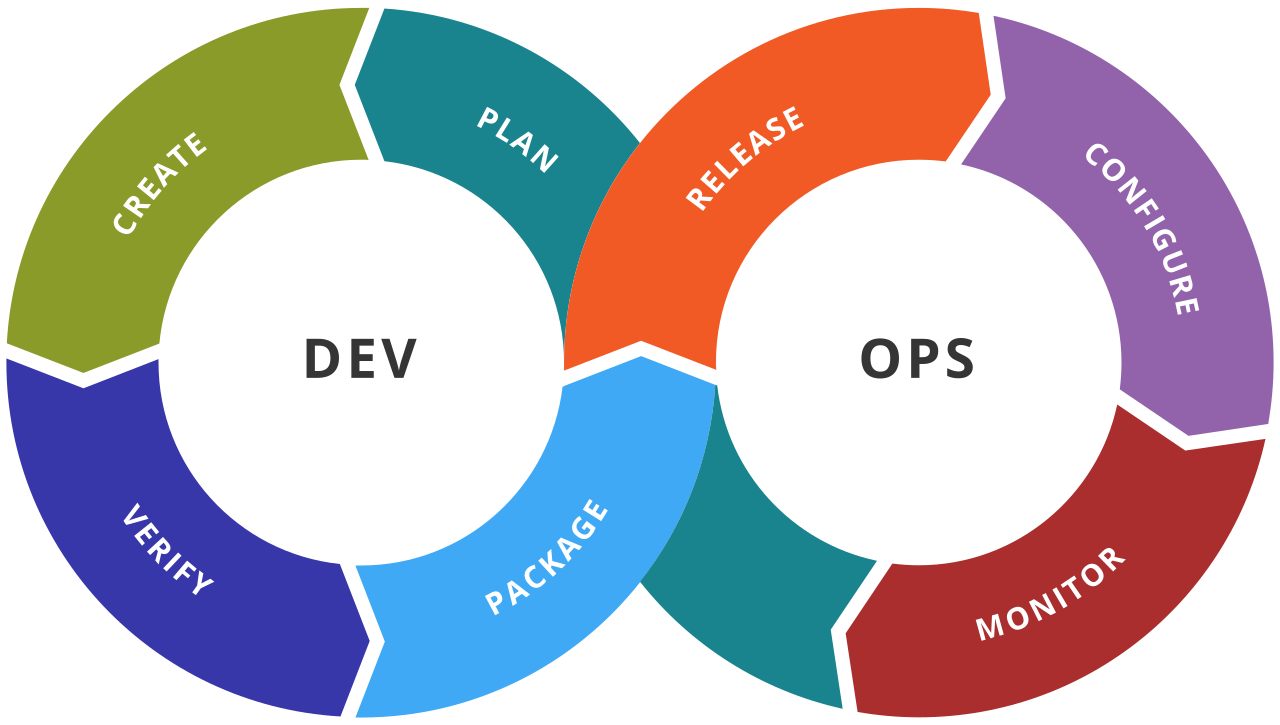
When is DevOps Suitable?
The leading software development companies use this model. It can be a group of people focused on the development of a start-up or a popular IT product, companies performing software outsourcing, etc.
The main advantage is that the technical support specialist knows exactly when there will be a new release because they get this information firsthand. The developer, in turn, understands the essence of the client's problem as they can clarify all the details with technical support. Similar interactions with testers, designers, and documentation developers increase the speed of the product's release several times over.
But once again, the corporate culture and high motivation are extremely important here. Moreover, specialists working with DevOps do not meet very often, making their services more expensive.
Project Implementation: Your Own Team or Software Outsourcing
Now that you have chosen the best model for your product, it's time to decide on the development team.
Depending on your financial capabilities and your goals, you can choose one of three options:
- Your own development team. It's a good option for an immediate start. Plus, you can always change your priorities and postpone the work on the project for some time. Quick feedback and competent management are essential for organizing the work of the development team.
- Extended team. This method will be good for you if you don't have enough experts to implement a software product in time, or they don't have the skills to create certain functionality.
- Software outsourcing is used when the company doesn't have its own staff of programmers, or it would be more efficient to bring in outside developers for this project.
Which method to choose is up to you. In any case, you should carefully study the advantages of each methodology and choose the best software development model for you. Decide on the goals, deadlines, and budget. Study the capabilities of your own development team, and start the successful implementation!

